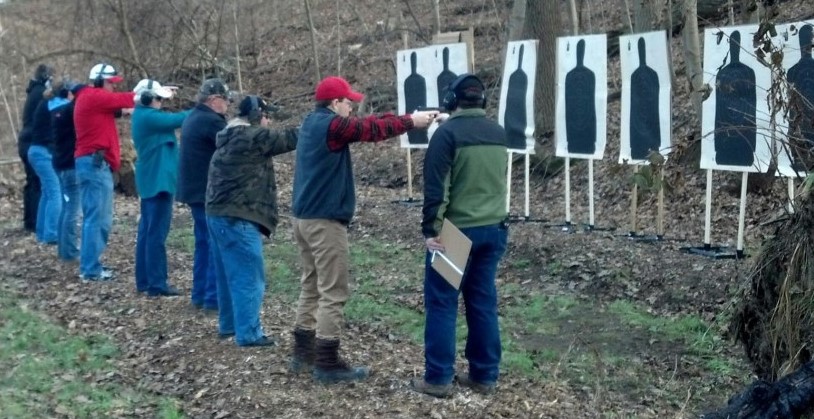
What training options does the defensive-minded shooter have if he can't attend a live-fire class every month ... or even every year? Photo: author
www.personaldefensenetwork.comYet herein lies the problem. A majority of that money was not the cost of tuition. It wasn’t even the cost of ammo or other gear needed for the classes. The real cost was my time and travel expenses. For those of us who are determined to take a training class, we will sacrifice our vacation time. We will pinch pennies and save just to get enough money for gas to drive six hours to take a class. Some of us will sleep in the car or crash on a friend’s couch and spend the week after with ice on our back and knees just to have a chance to learn from a great instructor. We are passionate about learning self-defense and will make some big sacrifices in our lives to do that. Yet even for us, there are times when we can’t make it work.
The problem is, the number of people who are willing and able to make those sacrifices are few and far between. Not everyone is a training junkie, nor should they be. Instructors across the country are seeing that reality as they try to fill classes on their home range. Unless the course is required for a CCW, people aren’t flocking to sign up. Even amazing weekend seminars like Paul-E-Palooza struggle to get enough people to sign up to make it worth having the event. It’s a shame, but there must be reasons behind it.
Time is one of the biggest deterrents for most people. Few people have the time to spend half a day traveling one way, two days training, and half a day traveling back. For me, that means taking two days off work plus the weekend. That may not be a huge deal for me, but for the person who only gets one week of vacation time per year, that’s a big sacrifice. That class had better be worth it!

The average person has to work self-defense training into their schedule. Photo: author
www.personaldefensenetwork.comTravel expenses can be the biggest deterrent. According to a report produced by Business Travel News titled “Corporate Travel Index,” on average the domestic U.S. daily cost for travel is $306.91. For a two-day weekend course, this adds up to $613.82. Add this to your $200+ class tuition, 1,000 rounds of 9mm ammo at $225 (or some other specialized gear needed for the class), and you are up to $1,038.82 for a weekend class. Add in extras like a babysitter or dog sitter and the expenses multiply really fast. It’s going to take a lot of convincing to get my family to agree to give up the family vacation to Disney World so I can take the latest pistol-handling course. Trust me. May God have mercy on my soul if I ever suggest that again to my family.
THE PRESENT DEMAND FOR SELF-DEFENSE TRAINING
Although there may be exceptions to this in certain parts of the country (especially when it comes to mandatory CCW classes), I think the bulk of our potential students are frustrated with us. Complaints range from the location of classes to how long the classes are and that the cost of the class is more than they want to spend for that particular topic. Although some people may make excuses for not training because they let their ego get in the way, I suspect a lot more really do have limitations that keep them from taking a class they truly want to take.
“Look at that! A two-day class on improvised weapons in the workplace? That sounds awesome!” I search YouTube for reviews of the class, “Oh, there’s a trailer with screen shots of the class.” I pause the video and squint to see what’s on the whiteboard. I look at the faces of the students. “No mistake, learning is happening! It’s only $300 for the whole weekend? Say no more, I’m sold! Well, wait, the class is in Vegas. That’s too far to drive -- I’ll probably have to fly there. Oh no, it’s only being offered on the weekend we have that thing going on. I really wish I could go. I even have the $300 but the travel expenses will be too much. I really do want to learn, but too many things are working against me. Guess I’ll have to settle for watching YouTube videos and scavenging the Internet for information on this topic. I know it’s unstructured and not as good as the class, but what choice do I have? Maybe I’ll use that $300 to buy some of the gear the guy on YouTube uses. That should make me feel better about not being able to take the class.”
Sound familiar? It may not go exactly as scripted, but I’ve watched this scenario play out over and over. My guess is you’ve been here too. It’s frustrating for me, as an instructor, to watch and it has to be frustrating to potential students as well. I know this is going to sound harsh and is likely to bring torches and pitchforks to my door, yet it has to be said. Traditional classroom-based self-defense training is dying. Expecting students to come to you wherever you are will eventually be a thing of the past.
If you think about it, we’re already seeing this. How many new training facilities at the level of Gunsite Academy or Rogers Shooting School have popped up recently? Yeah, I hear the crickets too. A few have even shut their doors in recent years. Now before you get too upset, stay with me.

Having material available 24/7 allows couples, who might not be able to afford to take self-defense classes together, to spend time learning together. Photo: author
www.personaldefensenetwork.comYet, we see all the time that women and men in this culture are going back to school, getting continuing education and developing new skills. How do they do it? Simply, the educators are meeting them where they are and providing education to them when they are able to learn. Students are getting used to this type of education. As time goes on, they will become more demanding. They will expect the firearms and self-defense training industries to provide them what they need, when they need it.
In the business world, how do we see the bulk of training being accomplished? In this economy, I don’t get to hop on a plane and travel to a training class very often. Budgets are tight and people wear a lot of hats. The majority of training in the business world occurs through self-paced online training or interactive webinars. In some cases, it’s both. Occasionally an in-person session is held for those topics that require hands-on instruction. The key is that we typically get to do the majority of training on our own time and in between other tasks. Self-defense and firearms training students are starting to demand this too.
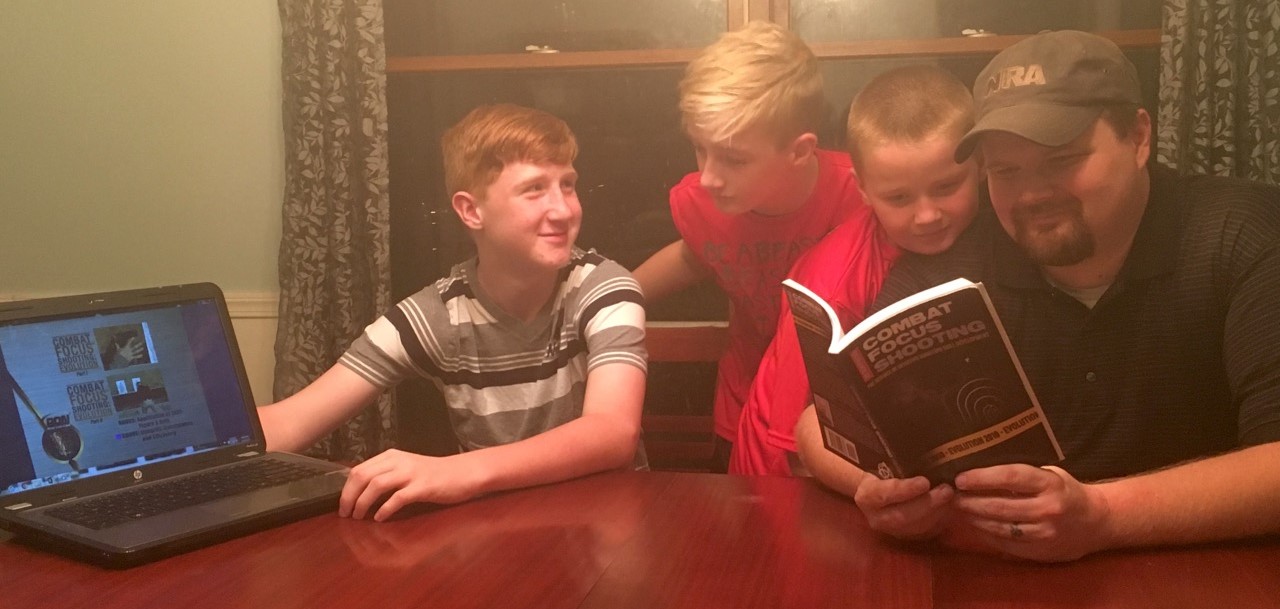
By providing multiple options for self-defense training, instructors can reach entire families. Photo: author
www.personaldefensenetwork.comTHE DIY FACTOR
The Do It Yourself ideology has become nearly a $30 billion industry. Adults between the ages of 26 and 39 dominate this market. This age group encompasses nearly 25% of the U.S. population. Like it or not, they have a voice, a big voice, and they are asking for information to be provided in a particular way. They can’t be ignored if we truly want to help people be safe.
This age group has grown up with the technological advances of the Internet. Websites like YouTube, discussion forums, wikis, et al have brought massive amounts of information to their fingertips for the low cost of an Internet connection. So many sources of information exist that a person can spend countless hours researching and learning topics without ever getting off their couch.
Although this generation is used to learning this way, they are not opposed to shortcuts that help them find the information they seek. In the world of self-defense and defensive use of firearms, countless videos and articles are out there. The DIY generation’s struggles are first, sorting out the bad information from the good, and second, finding all the pieces and putting them together.
Students are showing up to self-defense classes with gaps in what they know and incorrect information in some areas where they have taken bad advice from unqualified sources. Instructors are spending a lot of time with this group, correcting the bad information and filling in the gaps. This is very frustrating to a person who has spent hundreds of hours researching information only to find they have gaps they didn’t know they had. Or even worse, all that time was spent learning something that was flat wrong or out of context to their goal. It is important to understand where they are coming from and to help them before they spend more time going in the wrong direction.
This group needs guidance, vetted resources, and the freedom to find the answers on their own. A classroom setting generally does not allow this type of freedom. The industry needs to start thinking outside the box about how to meet this demand.
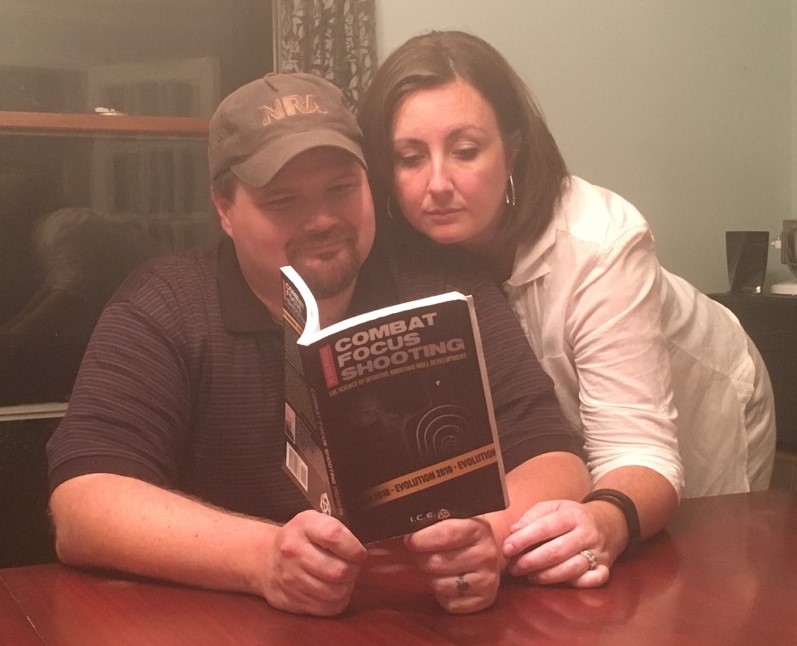
Some students learn better by reading books or training material. Photo: author
www.personaldefensenetwork.comTHE FUTURE OF SELF-DEFENSE TRAINING
The future self-defense student is someone who wants training on his or her terms. Across the demographic profile, self-defense and defensive firearms students want instructors to go to them and make training convenient and interesting for them.
A hybrid approach is needed to meet the demands of future self-defense students. I believe it will require offline, online, and in-person solutions. I also believe this approach will make learning these critical skills more accessible to those who would not have had the opportunities. If done properly, this approach has the ability to open doors to demographics that this industry has never been able to break through. What is this approach?
1. Offline
- Book-Based Learning: This is not going to disappear. People still enjoy learning through books. This may continue to move away from paper and into e-book formats and even enhanced e-book formats, with media that can be viewed on mobile devices.
- Video-Based Learning: I believe this will still be a viable method but the delivery format will move away from DVD and Blu-Ray and toward offline non-streaming digital video that can be played on smart TVs and mobile devices.
2. Online
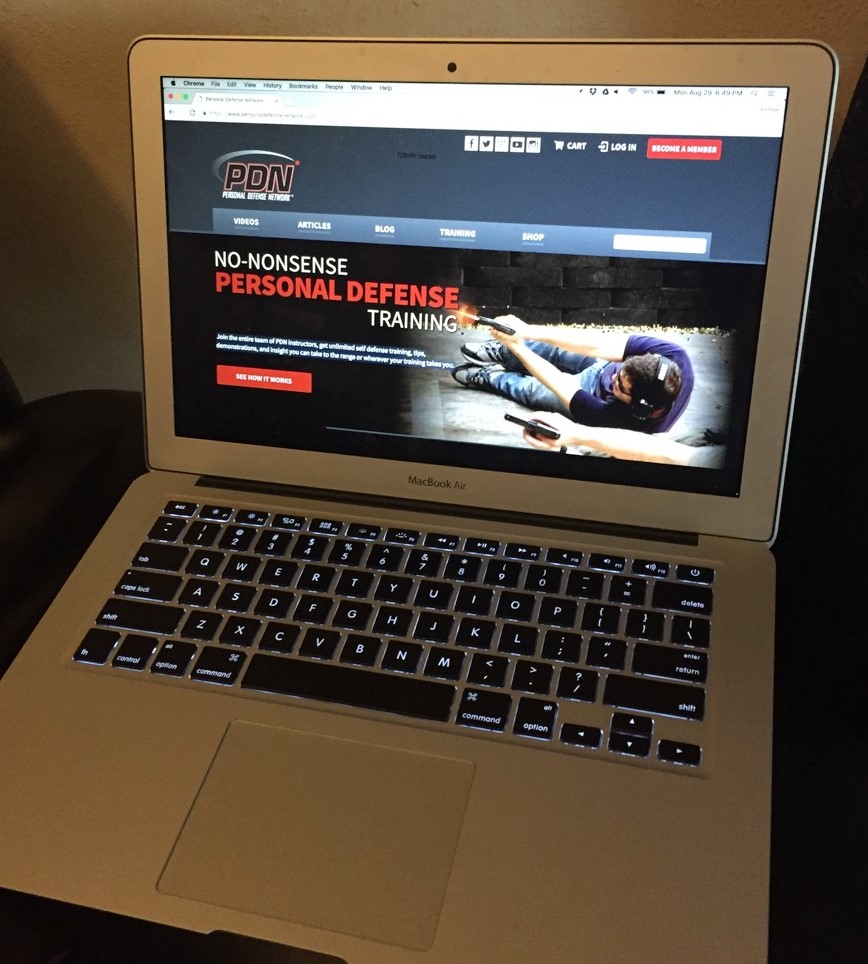
PDN provides self-defense training resources with vetted instructors, where students can go to learn on their own time. Photo: author
www.personaldefensenetwork.com- Self-Paced Learning: I believe on-demand online self-defense classes with video, quizzes, reading material, etc will be one of the largest market areas for self-defense training in the future. A majority if not the entire classroom portion of most training classes can be done in video format with integrated reading material and pass/fail quizzes. This solution meets a lot of the demands of the DIY group as well as the busy soccer mom. The beauty of this solution is that it doesn’t require travel and can be used at any time of the day or night. The Personal Defense Network is also on the leading edge of this type of learning with the PDN Academy.
- Interactive Learning: A fully self-paced learning class is not for everyone, and some people are willing to sacrifice convenience for more personal interaction. This is where an interactive learning solution is needed. This can be webinar based, in small groups with students asking questions. These classes can be broken up into several interactive learning sessions. If appropriate, it can include some self-paced learning exercises between sessions. In the end, students will get a group-learning environment with the interaction they desire.
- One-on-One Learning: I believe there will be more opportunities for one-on-one online learning in the future. With advances in mobile technology, high-definition cameras, and video-conferencing software, it is now possible to have private one-on-one tutoring sessions between an instructor and a student. Not only will this help bridge the gap between in-person self-defense classes and online self-defense classes, it will open the door to one-on-one tutoring that would have been too cost prohibitive for most people to take.
3. In Person
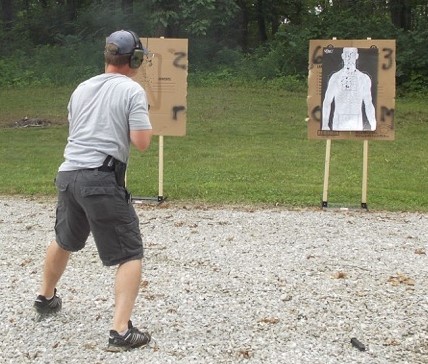
Many instructors now take their classes to where the students are rather than expecting students to travel to them. Photo: author
www.personaldefensenetwork.com- Regional-Based Learning: For some time now, instructors have been transitioning to taking their self-defense classes on the road. The highly successful Personal Defense Network Training Tour is a great example of this success. Instructors are realizing they need to go where students are located. These regional-based training classes can also be supplemented with offline and online training strategies just like conference-based classes.
SELF-DEFENSE TRAINING OBJECTIVES
Beyond the future learning options available to us, we need to have a clear objective for the training. Too many training programs fail to outline the big-picture steps students need to take in order to be proficient in self defense. Dr. Sherman House has outlined what he refers to as the Civilian Defender training list: what he feels should be learned and in what order it should be learned to optimally prepare a citizen to defend themselves and their family. I believe this is what students are looking for now and will be in the future. The future student wants the big picture. They want to know what kind of time and commitment they are getting into before they make a decision to take a class. Being secretive about this only makes students question if they can trust you. The future self-defense and defensive firearms student wants it all laid out for them so they can believe in the program as a whole. Instructors will need to focus more on buy-in at the overview level from students.
As technology advances and instructors begin using the new technology and techniques, arguments against online training or a hybrid approach seem to be eclipsed by arguments against traditional classroom-based training. There will always be a need for hands-on training. But I believe it will look different in the future than it does today. Just as we have seen in other areas of education, change is coming. The self-defense training world needs to be ready to meet the needs of future students.

I am one of those training junkies, but also restricted by time, family, and money. I love live classes and am a PDN member. I was intrigued by the Conference Based Learning. Can you point me in the direction to get on the email lists, or to the Web sites, of some of these conferences, particularly in the Southwest or West Coast? Thanks for any help you can give!!!
Right on Joshua. I have seen this new trend in the firearms training industry for years, and at 55, I too appreciate the availability of online instruction. I have many of Rob's DVDs and have learned a great deal from him and the PDN. Keep up the good work... and training. Hey, by the way... I didn't see Atlanta, GA as one of the cities where the PDN Training Tour is being offered. Maybe Rob and team should consider GA on your next round! Cheers and be safe!
EXCELLENT ARTICLE -- covered most (but not all) of the issues that come to mind. Let me mention a few more.... As David mentioned very briefly in passing, many of us range from profoundly to just somewhat disabled. And far more of the people who might want training are well past our prime. Having a class that includes a bunch of 20-somethings, and two or three of us old folks just simply doesn't work. Another issue that comes up far more often than it should are otherwise competent instructors who feel (or even SAY) "Forget everything you learned from anyone else... MY way is the only way" Another problem area is the vast number of schools run by real or imagined Tier One Operators (or just ordinary "experienced" military or police instructors) where much of the course content is simply inappropriate for civilian defensive purposes. [Some of these courses are excellent for competitive shooting which is an entirely different topic] As the author suggests, the future of self defense training will undoubtedly include hybrid, blended, and a mixture of synchronous and asynchronous learning -- which will help with many of the issues mentioned in the article (especially scheduling and costs) but which will make it even more difficult for entry level and mid level students to evaluate the courses they are considering.
I agree, and that’s why I am taking as many classes as I can as I fear that the ranks of qualified and experienced instructors will diminish in the years ahead. I applaud your diligence and looking at new training resources but face to face hands on training can never be replaced in total by technology based training. Thanks again for your efforts.
good sound thinking and believe it would do many a great deal
I am in total agreement with you. I am currently taking a few online courses to keep a license in force and will have to travel out of state for additional within a year. I would love the ability to fly out for self-defense and firearms training, but the time and expense are right in line with what you have written about. I do see that some of the training organizations are doing some travel and training in different parts of the country. I'll probably look to do some high quality training with reputable trainers that may be a little closer to home. I've also ordered a few dvd's from some companies to observe and try some of the techniques and drills out on the range. Your article is right on target :-)
I own a gun store in a small town. Your article is very thought provoking. It makes a lot of sense and I've seen exactly those thought processes in deciding about training.
Thank you for a very thoughtful article. Another issue worth addressing is how to help the trainee identify "holes" in his training. This clearly depends upon the individual, his age, (dis)abilities, geography, occupation, leisure time activities. For example, do I take another tactical carbine class, or maybe I should instead take a tactical first aid class, a defensive driving class, or an unarmed combatives class. It would be nice for you (or somebody) to come up with a framework for somebody to set realistic training objectives, to assess their skill level, and then to go about filling in the holes.